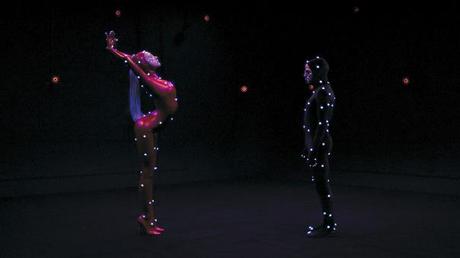
Holy Motors, Leos Carax’s first film in 13 years, will leave a lot of people stumped. Its surrealist madness and unchained narrative makes you wonder what’s coming next, an unsettling feeling for your average cinema-goer. But somehow, Carax creates a kind of poignancy in every character he introduces us to, and his manifesto becomes intensely life-affirming.
Starting as it means to go on, the film begins with a dream sequence, where the film’s star Denis Levant (a longtime collaborator with Carax) breaks through his bedroom wall into a cinema where the audience are asleep. When he wakes up, he begins his day as ‘Monsieur Oscar’, a man who’s work consists of being driven around Paris in a white stretch limo and going to ‘appointments’, where he must act out different characters for a brief period of time.
For much of the film it is not made clear why he is doing this, and to what end. Many of the character transformations involve donning prosthetics (an old beggar woman), aging skin (a dying man), or strange facial hair (the grotesque ‘Monsieur Merde’). He wears a black catsuit as a motion captured acrobat, becomes father to a family of monkeys, dies twice (not spoiling it for you here) as well as the long lost lover of Kylie Minogue.

So who is he really? That’s one thing Carax doesn’t seem to want us to know. For him, identity is a prison, and film is an opportunity to escape it. His main speech concerns creating moments of beauty, whether that be through watching death to reaffirm the sensation of life, or through shedding light on some of society’s liminal characters.
As in his 1991 film Les Amants du Pont Neuf, Carax shows an interest in the eye as a channel to the soul, as well as musical interludes to aid the emotional journey he takes us on. Carax also shows a nostalgia for the medium of film, and includes a plethora of literary and filmic references, to the delight of critics everywhere. This affecting combination reminds us that Carax is still one of France’s genius eccentrics, an ‘enfant terrible’ of cinema.
If for no other reason than intrigue, you won’t want to miss this mad little gem.
